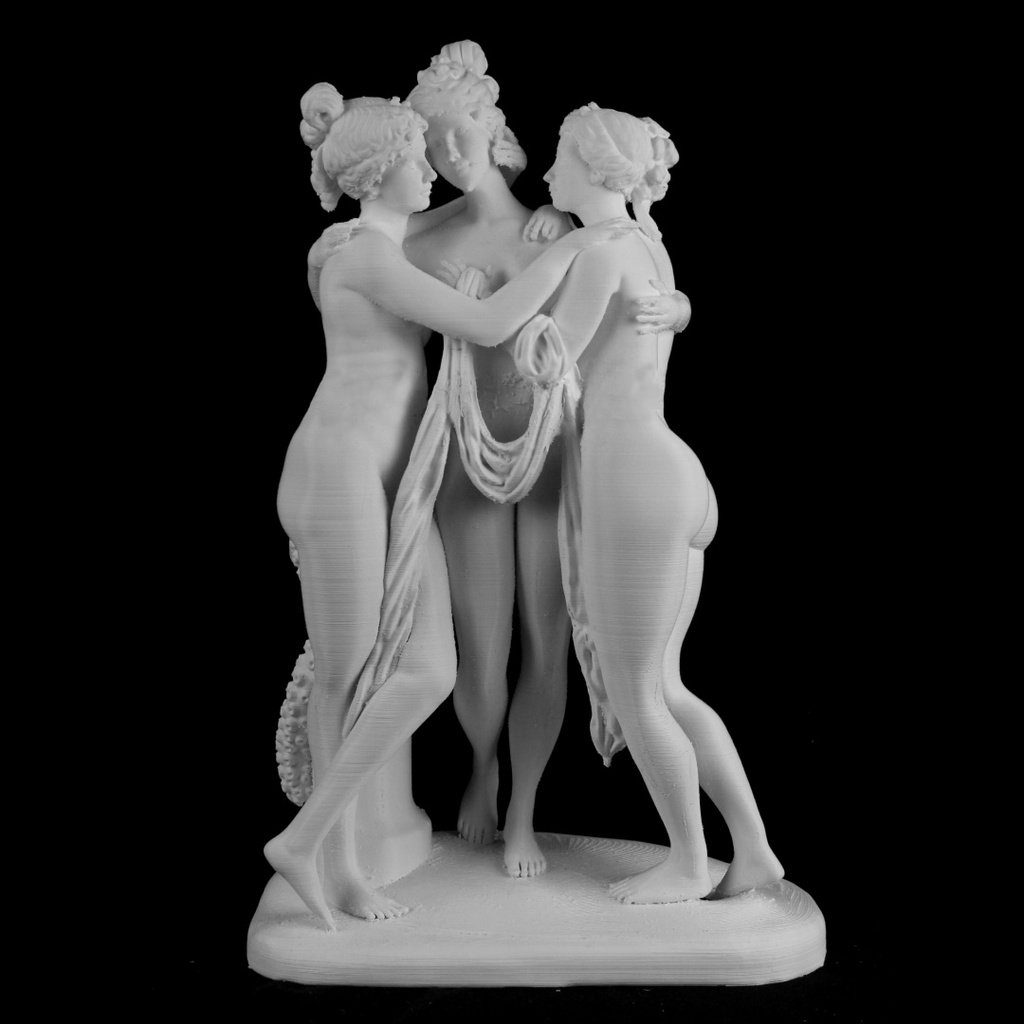
The Three Graces at the Hermitage Museum, Russia
thingiverse
This stunning marble figure group was created for the prestigious Sculpture Gallery at Woburn Abbey in Bedfordshire, and it was initially showcased in a specially designed Temple of the Graces. Commissioned by John Russel, the 6th Duke of Bedford, from renowned sculptor Antonio Canova, this masterpiece was born out of a captivating encounter between the two artistic visionaries in Rome's studio in 1814. The Duke was mesmerized by Canova's group of the Three Graces that he had carved for Empress Josephine, Napoleon Bonaparte's estranged wife, who tragically passed away in May of that year. Canova had created an exquisite version of the Three Graces for Empress Josephine earlier, but it remained with her son after she died. The Duke was determined to own a similar piece and offered Canova a substantial sum to create another version. However, Josephine's son refused to relinquish his claim on the original sculpture, which is now proudly displayed at the Hermitage in St Petersburg. Undeterred by this setback, the Duke commissioned Canova to craft an entirely new version of the Three Graces. This ambitious project was initiated in 1814 and took three years to complete, with Canova finishing it in 1817 and installing it at Woburn Abbey in 1819. The renowned sculptor personally supervised the installation process. The Three Graces are celebrated for their timeless beauty and elegance in classical literature and art. As daughters of Jupiter (or Zeus in Greek mythology), they were revered companions to the Muses. Thalia, representing youth and beauty, stands alongside Euphrosyne, embodying mirth, with Aglaia personifying elegance. Canova's fascination with the Three Graces dates back to 1799 when he first depicted them in a painting. He later executed numerous drawings, a relief, and even a terracotta sketch (now housed at the Musée de Lyon in France) around the same time. In 1810, Empress Josephine commissioned him to create a full-size marble version of the group. Canova's masterpiece is ultimately rooted in his earlier sketches of the subject, including a closely comparable terracotta model. The immediate inspiration for the final marble sculpture was the full-size plaster group that still exists in the Canova Museum at Possagno in Italy. This plaster model featured points used to transfer the composition onto the marble. As the creator of the original design, Canova oversaw every detail of the project, from the initial blocking out of the marble by his assistants to the final carving and finishing touches that gave the figures an air of softness and harmonious relationships between their heads. The exquisite craftsmanship is evident in the surface texture of the stone. Interestingly, a slightly earlier version of this sculpture exists in St Petersburg, which was also supervised by Canova but differs in some minor details. Copies made of marble during the 19th century after the sculptor's death do not quite match the sensitive handling of the original marble that Canova achieved. The masterful creation was initially captured through a 3D scan by ScanTheWorld!
With this file you will be able to print The Three Graces at the Hermitage Museum, Russia with your 3D printer. Click on the button and save the file on your computer to work, edit or customize your design. You can also find more 3D designs for printers on The Three Graces at the Hermitage Museum, Russia.
